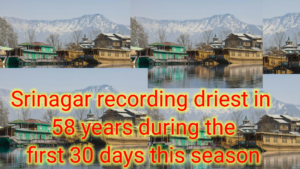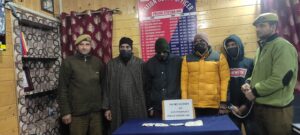
In an unprecedented turn of weather events, Srinagar has recorded the driest January in 58 years, with minimal snowfall during the first 30 days of the season. Typically covered in snow, this January saw only 1.1mm of rain in Srinagar, marking the lowest precipitation since 1966 when 0.6mm was recorded during the same period.
The recently concluded ‘Chillai-Kalan,’ the 40-day harsh winter period, also remained exceptionally dry in Srinagar, with only 1.5mm of precipitation, the lowest since 2015.
Qazigund and Kokernag in the south Kashmir region experienced their lowest-ever precipitation for the first 30 days of January, recording 0.0mm and 1.4mm, respectively, compared to 1.0mm and 1.4mm in 2018. Pahalgam recorded 2.6mm of precipitation, slightly higher than the previous lowest of 3.3mm in 2018.
While the night temperature in Srinagar dropped, it remained above normal, signaling the commencement of the 20-day-long ‘Chillai-Khurd’ period. Other regions in Kashmir also reported varying temperatures, with Gulmarg receiving 3.5cms of snow and Kupwara receiving 3.3mm of rain in the last 24 hours.
As of January 30-31, there is a possibility of light to moderate rain/snow in many places across Jammu and Kashmir, with chances of heavy snowfall in higher reaches of seven districts. The forecast from February 1-2 anticipates generally cloudy weather with light rain and snow in many places towards late afternoon and evening, followed by the possibility of light to moderate rain and snow from February 3-4.
It’s important to note that the conclusion of ‘Chillai-Kalan’ does not mark the end of winter; it is succeeded by the 20-day-long ‘Chillai-Khurd’ period from January 30 to February 19 and a 10-day-long ‘Chillai-Bachha’ (baby cold) period from February 20 to March 1.


